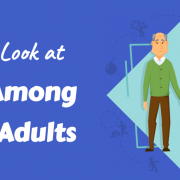You are looking at an archived version of our site. Please visit thepcc.org for a fresh, new experience!
Health Disparities & Social Determinants of Health (SDOH)
As patients enter the healthcare system, primary care is typically their first stop. Because of this, primary care clinicians have a unique opportunity to develop relationships with patients and communities. This also enables them to get a glimpse of the hardships that a particular patient or group of patients is dealing with and see how that can affect their overall well-being. As the healthcare system, and primary care in particular, shifts away from a transactional system, to one more focused on high quality, comprehensive care, these outside factors that often play a significant role in patients’ lives must be accounted for.
The CDC defines health disparities as preventable differences in the burden of disease, injury, violence or opportunities to achieve optimal health that are experienced by socially disadvantaged populations. It defines the social determinants of health as conditions in the places where people live, learn, work, and play. While several of these factors or locations fall out of the traditional sphere of primary care, a well-organized and coordinated primary care team should have the resources to help patients beyond their medical needs.
Resources

Patient Portals: How can they impact primary care? | Settembre 2019

Get Hired in Healthcare: An Online Guide for Student Veterans | Agosto 2019

Knowledge, Beliefs and Practices Regarding Antiretroviral Medications for HIV Prevention: Results from a Survey of Healthcare Pr | Luglio 2015

The Impact of Patient Race on Clinical Decisions Related to Prescribing HIV Pre-Exposure Prophylaxis (PrEP): | Febbraio 2014
- ‹ precedente
- 4 di 15
- seguente ›
News
Febbraio 3, 2022 | U.S. Department of Health and Human Services
Gennaio 13, 2022 | National Alliance of Healthcare Purchaser Coalitions
- ‹ precedente
- 4 di 47
- seguente ›
Events & Media
Gennaio 22, 2021 | Mass General Brigham
Novembre 17, 2020 | Rural Health Research Gateway
Settembre 21, 2020
- ‹ precedente
- 4 di 20
- seguente ›
Related Content
Pagine
Pagine
Menu secondario
Copyright © 2024 Primary Care Collaborative














